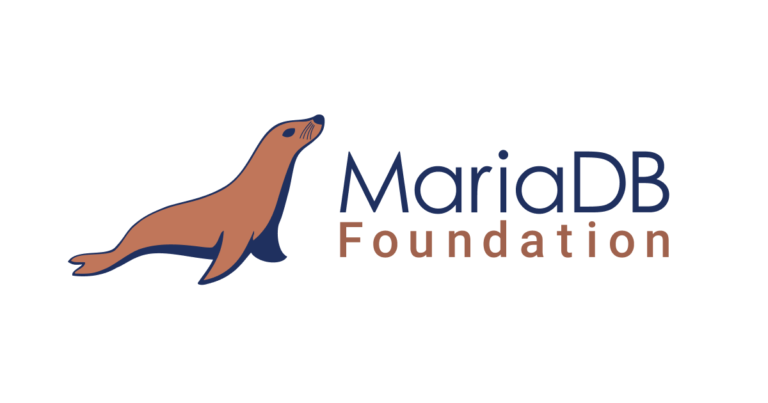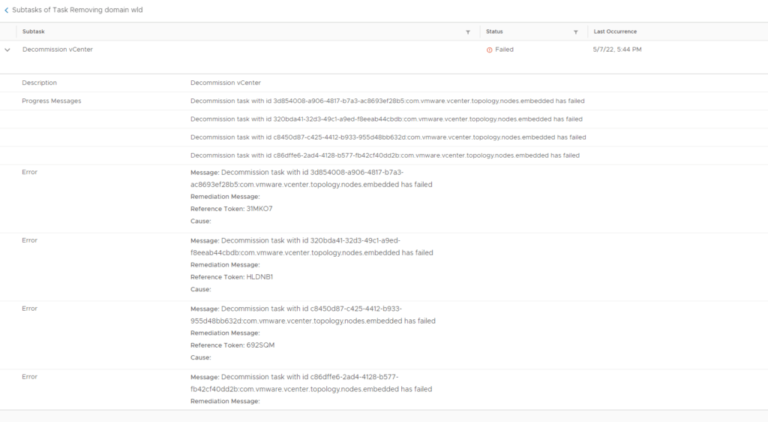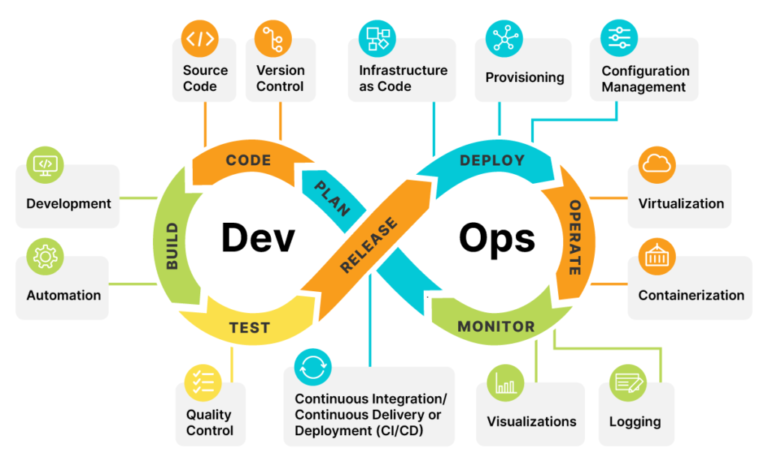Are you looking for a beginner-friendly gateway to Arch Linux? Look no further than Manjaro!
We will explore the unique features of Manjaro Linux, compare it to Arch Linux, and discuss the key tools that make it user-friendly.
From dedicated repositories to hardware detection, Manjaro has everything you need to make the switch to a more customizable and efficient operating system.
Stay tuned for our conclusion and recommendations at the end!
Key Takeaways:
- Manjaro offers a beginner-friendly gateway to Arch Linux, making it easier for users to transition to this powerful operating system.
- With its dedicated repositories and user-friendly tools, Manjaro provides a smooth and hassle-free experience for users.
- Despite its initial struggles and comparisons to Arch Linux, Manjaro has proven to be a reliable and stable option for those looking to explore the world of Arch.
Introduction to Manjaro
Manjaro, a user-friendly Linux distribution based on Arch, caters to a diverse community of users seeking a stable and customizable operating system.
Rooted in the renowned Arch Linux philosophy, Manjaro brings forth a refined blend of cutting-edge technology with an emphasis on simplicity and ease of use. The fundamental ethos behind Manjaro revolves around providing a hassle-free experience that appeals both to novices and seasoned users alike. By leveraging the robust Arch foundation, Manjaro offers a rolling-release model, ensuring continuous updates without the need for full OS reinstallations.
Manjaro: A Different Kind of Beast
Manjaro, often referred to as a different kind of beast in the Linux realm, offers a range of desktop environments like XFCE, Plasma 5, and Gnome, complemented by extensive documentation for users.
One of the unique aspects of Manjaro is its rolling release model, providing continuous updates without the need for reinstallations. This feature ensures that users have access to the latest software versions and security patches seamlessly.
The user-friendly interface of Manjaro caters to both beginners and advanced users, allowing for customization and optimization based on individual preferences. Its intuitive design and smooth performance make it a popular choice in the Linux community.
- The robust documentation resources offered by the Manjaro team play a crucial role in assisting users with installation, troubleshooting, and general usage. Whether through forums, wikis, or tutorials, the community support adds significant value to the user experience.
Manjaro Linux – The Ugly Duckling
Manjaro Linux, often likened to the ugly duckling of the Linux world, differentiates itself through its stable, testing, and unstable branches, providing users with a versatile package management system.
Its unique branch system allows users to choose between stability and bleeding-edge features, catering to a diverse audience of enthusiasts and professionals alike. The availability of thousands of packages through the Arch User Repository (AUR) further enhances the customization potential of Manjaro Linux.
Positioned as a bridge between user-friendly distributions and more advanced variants, Manjaro strikes a delicate balance by offering a user-friendly experience without compromising on flexibility and control.
Comparison: Manjaro vs. Arch Linux
When comparing Manjaro to Arch Linux, users encounter a choice between the streamlined minimalism of Arch and the user-friendly approach of Manjaro.
Arch Linux is known for its simplicity and customization options, allowing users to build their system from scratch. It follows a rolling-release model, meaning users receive the latest updates continuously. On the other hand, Manjaro is designed to be more user-friendly, offering a pre-configured system with an easy-to-use graphical installer and access to the Arch User Repository (AUR). This makes it a great choice for beginners or those looking for a hassle-free Linux experience.
Arch appeals to advanced users who prefer to have full control over their system, while Manjaro caters to a broader audience, including both beginners and experienced users looking for a more user-centric approach. In terms of software management, Arch uses the Pacman package manager, while Manjaro utilizes the user-friendly Pamac package manager, which simplifies the process of installing, updating, and removing software packages.
While Arch provides a minimal base and lets users add only what they need, Manjaro comes with a selection of software out of the box, making it a quicker option for getting started. Ultimately, the choice between Arch Linux and Manjaro boils down to individual preferences, expertise level, and desired level of system control.
Switching to Arch (from Manjaro)
Transitioning from Manjaro to Arch Linux involves considerations such as installation methods, ARM architecture support, and application compatibility, catering to users seeking a more hands-on Linux experience.
When making the switch, one of the fundamental aspects to address is the installation process. Arch Linux is known for its minimalist approach, requiring users to set up the system manually, offering a high level of customization and control over the configuration.
Pacman, the package manager for Arch, plays a central role in managing software and updates efficiently. Understanding its usage is key to navigating through the vast Arch Linux repositories.
If you are migrating to Arch Linux on ARM architecture, it’s vital to ensure that the specific ARM device you are using is supported by Arch. Compatibility issues may arise due to differences in hardware configurations.
Adapting applications from Manjaro to Arch involves evaluating software versions, dependencies, and potential system conflicts. Some adjustments may be necessary to ensure optimal performance and functionality in the new environment. Making a smooth transition requires careful planning, thorough research, and a willingness to learn the intricacies of Arch Linux.
Re: Switching to Arch (from Manjaro)
Revisiting the decision to switch from Manjaro to Arch Linux, users can appreciate the enhanced customization options, privacy controls, and security features inherent in the Arch ecosystem.
One notable aspect that attracts users to Arch is the unparalleled level of customization it offers, allowing individuals to tailor their Linux environment according to their exact preferences and requirements. With Arch, users have the freedom to build their system from the ground up, selecting only the components and software they truly need.
The focus on privacy in Arch Linux is paramount, with users having more control over their data and system processes. This emphasis on privacy give the power tos users to maintain a secure computing environment, reducing the risk of potential vulnerabilities and unauthorized access.
Key Features of Manjaro
Exploring the key features of Manjaro unveils a robust operating system built upon the Arch kernel, extensive repositories, and hardware compatibility for diverse user needs.
Manjaro’s Arch-based components provide users with the flexibility and customization options that are synonymous with the Arch Linux distribution. The Manjaro team meticulously curates packages from Arch repositories, ensuring stability and user-friendliness. This approach strikes a balance between bleeding-edge software updates and system reliability.
The Manjaro repository system simplifies software management by offering access to a vast array of curated packages via graphical package managers like Pamac or Octopi, as well as the command-line interface. Users can easily install, update, and remove software, all while benefiting from the Manjaro team’s optimized configurations for performance and security.
Regarding hardware support, Manjaro excels in recognizing and accommodating a wide range of hardware components, making it suitable for a diverse set of computers and devices. Whether you are running Manjaro on a brand-new laptop or an older desktop, you can expect seamless integration and efficient operation thanks to its exceptional hardware support.
Overview
An overview of Manjaro highlights its user-centric design, software availability, and continuous updates through a rolling release model, catering to a dynamic user base.
Manjaro, built upon Arch Linux, employs a cutting-edge system architecture emphasizing simplicity and usability. This approach attracts a diverse community ranging from beginners to advanced users seeking a stable yet flexible platform. The software ecosystem of Manjaro boasts a myriad of pre-installed applications and access to the Arch User Repository (AUR), enhancing user experience and customization options.
Manjaro’s rolling release strategy ensures that users receive timely updates and security patches without the need for version upgrades, ensuring system reliability and efficiency.
Manjaro Kernel Management
Effective kernel management in Manjaro streamlines hardware detection processes, ensuring optimal compatibility and performance across a wide range of devices.
By utilizing the appropriate kernel version, Manjaro optimizes the interaction between the operating system and hardware components, allowing for seamless integration and robust functionality.
This meticulous attention to kernel management enhances driver support, allowing the system to effectively communicate with essential components such as graphics cards, network adapters, and sound devices.
Moreover, kernel management plays a crucial role in maintaining system stability by addressing potential conflicts and ensuring efficient resource allocation within the operating system.
Dedicated Repositories
Manjaro’s dedicated repositories offer a curated selection of applications and access to the Arch User Repository (AUR), enriching the software ecosystem for users.
These repositories are meticulously maintained to ensure stability and security, providing users with a reliable source of software. The inclusion of diverse applications caters to a wide range of user needs, from productivity tools to entertainment software. With seamless package management, users can easily install, update, and remove software packages, streamlining the overall user experience.
The integration of AUR in Manjaro allows users to access a vast collection of community-contributed packages, further expanding the software options available. This integration bridges the gap between official repositories and user-generated content, fostering a dynamic and collaborative software ecosystem.
Manjaro Package Repository
The Manjaro package repository simplifies installation processes and provides users with a suite of tools for managing software packages efficiently.
Users can access a wide range of software packages conveniently through the Manjaro repository, ensuring they have access to the latest updates and security patches. The repository streamlines the process of adding, removing, and updating software applications, allowing users to maintain a well-organized and up-to-date system effortlessly.
The availability of various package management tools, such as Pacman and Pamac, enhances the user experience by offering robust features for resolving dependencies, searching for new software, and ensuring system stability. This comprehensive approach fosters a seamless software installation process and enables users to customize their system with ease.
User-Friendly Tools in Manjaro
Manjaro stands out for its array of user-friendly tools, including hardware detection utilities and a comprehensive settings manager, enhancing the overall user experience.
One of the standout features of Manjaro is its efficient hardware detection mechanism, which instantly identifies and configures the system’s components for seamless operation. This automatic recognition of hardware components ensures that users can start using their devices without any manual intervention or driver installations, simplifying the setup process.
The settings manager in Manjaro offers a streamlined interface for users to customize various system configurations easily. With intuitive controls and clearly labeled options, users can personalize their system preferences with just a few clicks. These user-friendly tools contribute significantly to making the user experience smooth and hassle-free.
Exclusive User-Friendly Tools
Manjaro’s exclusive user-friendly tools give the power to users with customization options, security enhancements, and seamless hardware integration for a tailored computing experience.
One of the standout tools within Manjaro is the Manjaro Settings Manager, which acts as a central hub for managing system settings and configurations. Users can easily tweak their desktop environment, update software, and fine-tune hardware settings through this intuitive interface.
For bolstering security, Manjaro provides powerful tools like Firewalld and a comprehensive security guide to help users secure their systems against potential threats. This proactive approach to safeguarding user data sets Manjaro apart from other distributions.
Manjaro’s Kernel Management tool allows users to effortlessly switch between different kernel versions, enhancing compatibility with a wide range of hardware configurations. This level of optimization ensures a smooth performance tailored to the user’s needs.
Manjaro Hardware Detection
Manjaro’s hardware detection capabilities ensure seamless compatibility with a diverse range of components, including AMD processors and MSI MAG X570S TORPEDO MAX motherboards.
One of the standout features of Manjaro’s hardware detection is its ability to identify and configure specific hardware components with precision. Whether you are using an AMD Ryzen processor or an MSI MAG X570S TORPEDO MAX motherboard, Manjaro’s system can seamlessly connect with these advanced hardware setups.
The support for AMD processors in Manjaro is comprehensive, covering various models and generations for a smooth user experience. Regarding MSI motherboards, particularly the MAG X570S TORPEDO MAX, Manjaro excels in recognizing the unique features and optimizing performance accordingly.
Manjaro Kernel Detection
Manjaro’s kernel detection mechanism identifies and optimizes performance for high-end processors like the Ryzen 9 5950X, ensuring efficient utilization of computing resources.
When the system detects the Ryzen 9 5950X, it tailors the kernel settings to leverage the full potential of this premium processor, harnessing its processing power for seamless multitasking and resource-heavy applications. This compatibility not only boosts overall system performance but also enhances stability and responsiveness during demanding tasks. Users can experience smoother operations and reduced lag, thanks to the intelligent detection and customization performed by Manjaro. This seamless integration of cutting-edge technology with Manjaro’s adaptive kernel ensures that users get the most out of their high-performance hardware.
Manjaro Settings Manager
The Manjaro Settings Manager offers comprehensive customization options and privacy settings, give the power toing users to tailor their system preferences while safeguarding their privacy.
One of the key functionalities of the Manjaro Settings Manager lies in its ease of use, making it a go-to tool for both novice and experienced users alike. Through its intuitive user-friendly interface, individuals can effortlessly modify various aspects of their Manjaro system without diving into complex technicalities.
The Manager provides an array of customization features that allow users to personalize everything from themes and wallpapers to system fonts and icon sets. This level of flexibility ensures that each user can tailor their Manjaro experience to suit their distinct preferences and style.
Pamac Package Manager
Pamac, Manjaro’s intuitive package manager, simplifies software installations and updates by providing access to diverse repositories and streamlined package management tools.
Its user-friendly interface allows users to search for, install, and remove software effortlessly. Pamac also ensures system security by handling dependencies effectively, preventing conflicts and ensuring smooth operation of software packages. It offers support for AUR packages, expanding the software library available for installation. With its ability to manage updates seamlessly, users can stay up-to-date with the latest features and security patches. Overall, Pamac plays a crucial role in enhancing the user experience and productivity on the Manjaro Linux distribution.
Conclusion and Recommendations
In conclusion, Manjaro’s commitment to user satisfaction, robust community support, and a range of merchandise offerings establish it as a compelling choice for Linux enthusiasts.
It is evident that Manjaro’s active community engagement contributes significantly to its success, as users can seek help, share knowledge, and participate in forums, creating a vibrant ecosystem. This user-focused approach sets Manjaro apart by prioritizing user experience and feedback to continually enhance its services and features.
The availability of merchandise options such as branded apparel, accessories, and gear augments the overall user experience, allowing enthusiasts to showcase their support for Manjaro in various ways.
Conclusion
The conclusion reflects on Manjaro’s diverse branch system, encompassing stable, testing, and unstable branches that cater to different user needs and preferences within the Linux ecosystem.
Manjaro’s branch model is pivotal, offering a unique approach to balancing stability and cutting-edge features.
- Stable branches are designed for users prioritizing reliability, ensuring consistent performance and security updates.
- Testing branches provide enthusiasts and developers with early access to experimental software, fostering innovation and community-driven feedback.
- Unstable branches appeal to advanced users seeking the latest bleeding-edge technologies, although they come with inherent risks.
Each branch type serves a distinct purpose, exemplifying Manjaro’s commitment to flexibility and user-centric design.
See Also
The ‘See Also’ section provides additional resources on Manjaro’s documentation, community forums, and user-friendly features for readers seeking further information and engagement.
For detailed technical guides and tutorials, the Manjaro official documentation is a rich source of information that covers everything from installation processes to troubleshooting common issues.
Engaging with the vibrant Manjaro community can provide users with direct support, tips, and best practices. The community forums are filled with experienced users ready to assist newcomers with any questions or challenges they may face.
Exploring user-friendly tools like the Manjaro Settings Manager can simplify system configurations and updates, enhancing the overall user experience.
Frequently Asked Questions
What is Manjaro and why is it considered the gateway to Arch Linux?
Manjaro is a user-friendly, open-source Linux operating system based on Arch Linux. It is considered the gateway to Arch Linux because it provides an easier and more user-friendly way to access and use Arch Linux, which is known for its complexity and steep learning curve.
Is Manjaro suitable for beginners?
Yes, Manjaro is specifically designed to be beginner-friendly. It comes with a pre-installed graphical user interface, making it easier for beginners to navigate and use. It also provides access to a large and helpful community for support and guidance.
What makes Manjaro different from other Linux distributions?
Manjaro stands out from other Linux distributions due to its rolling release model, which means it receives continuous updates and improvements without the need for a major system upgrade. It also comes with its own repositories and package manager, making it more independent from its parent distribution, Arch Linux.
Can I still access the Arch Linux repositories and packages on Manjaro?
Yes, Manjaro uses its own repositories, but it also allows users to access the Arch Linux official repositories. However, it is recommended to use Manjaro’s own repositories as they have been tested and optimized for the distribution.
Is Manjaro a stable and reliable operating system?
Yes, Manjaro is known for its stability and reliability. It is thoroughly tested before each release and receives continuous updates and bug fixes. It also has a large and active community, providing support and assistance for any issues that may arise.
Can I customize and personalize Manjaro to my liking?
Yes, Manjaro offers a high level of customization and personalization options. Users can choose from a variety of desktop environments and themes, as well as install their preferred software and packages through the graphical package manager. It also supports the use of the Arch Linux AUR (Arch User Repository) for even more customization options.





